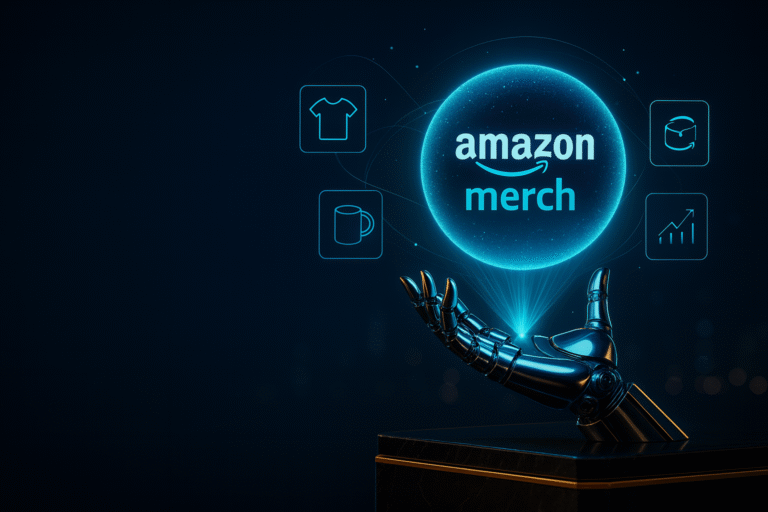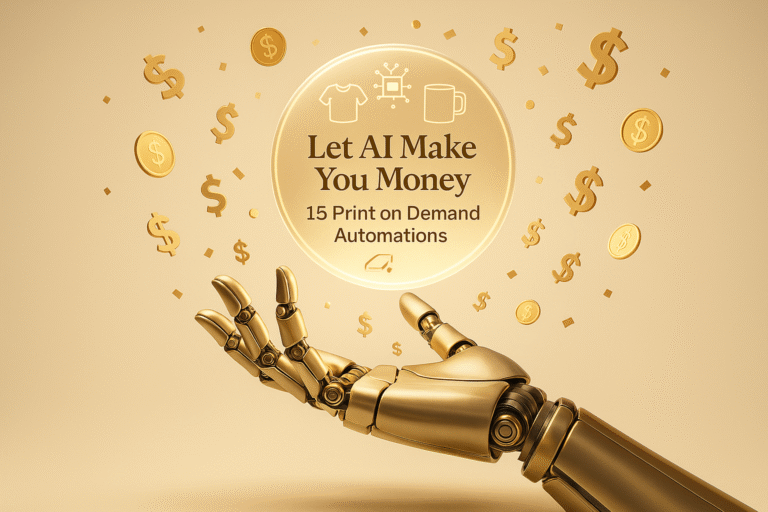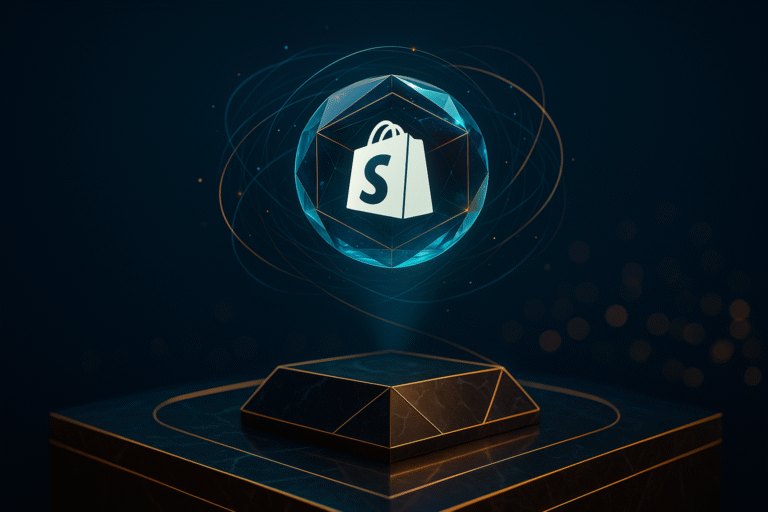When I launched my first FBA product, I treated Amazon like a lottery ticket. I guessed a niche, wrote a passable listing, begged for reviews, and hoped for a miracle. Then I watched a new competitor pass me in a week with a polished listing, sharper images, and ads that seemed to read customer minds.
What changed for me? I stopped guessing. I started using Amazon FBA AI—simple, practical automations and data-driven prompts that do the boring work at superhuman speed. Suddenly, I knew which niches had hidden demand. I saw the exact phrases customers used (and the frustrations behind them). I replied to messages while I slept. My margins opened up.
This post condenses the 15 simple Amazon FBA AI tricks that moved the needle most for me and for the sellers I’ve coached. I’ll share the playbooks, the prompts, and the tools—so you can skip the guesswork and get to growth.
Table of Contents
- Product gaps: let AI find profit pockets you can’t see
- The “Reality Check” niche score
- Price bands + fee drift = margins today, not last year
- Listings that feel human (because they start with human feelings)
- Images that stop the scroll
- Keyword clusters that win ranking wars
- PPC guardrails that protect your wallet
- Dynamic pricing & coupons that follow demand
- Reviews as roadmap, not report card
- Pre-purchase chatbots that sell for you
- Post-purchase automations that create fans
- AI-assisted bundles that lift AOV
- Brand trust: site + assets that calm buyer fears
- Delegation playbook (your time is profit)
- The weekly AI dashboard habit
At the end, you’ll find FAQs, related reads, and a full tools list (with links) to keep momentum.

1) Product gaps: let AI find profit pockets you can’t see
The pain you’ve felt: “Is this niche already saturated?”
The AI shortcut: Use data to surface underserved sub-niches where you can compete on value, not price.
What to do:
- Start with Smartscout Search Trends to spot rising keywords and seasonality you can ride, not fight.
- Cross-check competition depth and brand share in Smartscout.
- Layer in product viability and competitive intensity with Viral Launch.
Mini-case: Sara wanted to sell desk organizers. That niche screamed “red ocean.” With Amazon FBA AI tools, she found a sub-niche: bamboo cable stations for home offices with rising demand, weak image quality in the top 10, and poor bullet clarity. She entered with a crisp listing and an image set that showed real-world desks, not studio shots. Profit followed.
Reader question: Do I need to be a data expert to do this?
No. You’re looking for a simple pattern: rising search + weak top listings + acceptable fees. The tools do the math; you choose the opportunity.
2) The “Reality Check” niche score (stop falling in love with bad ideas)
The pain: Falling in love with a product because it feels right.
The AI shortcut: Give your niche a score before you spend a penny.
Prompt to paste into your favorite AI writing tool:
“Create a niche score (0–100) for [PRODUCT IDEA] on Amazon, weighting: demand momentum (35%), competition quality (25%), fee structure / price bands (20%), differentiation vectors (10%), and review pain points I can solve (10%). Output a one-page brief with a ‘Go / Caution / No-Go’ verdict and the top 5 risks.”
Now validate with data from Smartscout (search trends, brand share) and Viral Launch (sales estimates, reviews). Add a point for every obvious differentiation angle you find (material, size pack, add-on, bundle).
Reader question: What’s a good score?
Aim for ≥70 for your first product. You’re not married to it; you’re just making a rational bet.
3) Price bands + fee drift = margins today, not last year
The pain: You price based on last year’s screenshots. Fees change. Margins vanish.
The AI shortcut: Model your current margin using updated fee signals and competitor pricing bands.
- Use Smartscout Fee History to see how fees have moved in your category.
- Map competitor price bands and promotions; watch how coupons pull rank.
- If you’re flirting with low stock or long lead times, run the Low Inventory Calculator to decide whether to raise price, throttle ads, or both.
Reader question: Isn’t this overkill for a small brand?
Small brands need margin discipline most. A 3–5% fee drift can turn a “winner” into a slow leak.
4) Listings that feel human (because they start with human feelings)
The pain: AI listings that read like a robot wrote them.
The AI shortcut: Start with customer emotions—then let AI help with clarity and keyword coverage.
How to build it:
- Mine review insights from top competitors using Smartscout Voice of the Amazon Seller
- Ask AI to summarize “jobs to be done,” anxieties, and success moments.
- Draft the title, bullets, and A+ narration around those emotions.
- Hand the draft to a Fiverr listing copy pro for polish:
Mini-case: Omar sold spice jar sets. AI pulled up repeated customer pain: flimsy labels and messy refills. He led with “Bold, smudge-proof labels that actually stick,” showed a 20-second refill GIF, and added a funnel for free label reorders. Conversion jumped.
5) Images that stop the scroll
The pain: You have seven image slots and use three.
The AI shortcut: Storyboard your images like ads.
Template:
- Hero with decisive benefit text
- What’s in the box (with dimensions)
- Problem solved (before/after)
- How it feels (lifestyle in real setting)
- Proof (material close-ups, certifications)
- Comparison grid (you vs. alternatives)
- Use & care (make ownership feel easy)
Design help:
- Fiverr Logo Maker for consistent branding.
- Hire an image pro: Fiverr
Reader question: Can AI generate images?
Yes—but pair AI concepts with a designer who understands Amazon’s image rules and compression quirks.
6) Keyword clusters that win ranking wars
The pain: Random keyword stuffing = weak indexing.
The AI shortcut: Build clusters—keywords grouped by intent—and write to each cluster.
- Use the Smartscout Chrome Extension to collect real search terms as you browse.
- Group terms: “core purchase keywords,” “feature specifics,” and “use-case phrases.”
- Write bullets where each bullet “owns” a cluster. Your backend keywords should support the clusters you didn’t fit above the fold.
Prompt: “Cluster the following Amazon keywords by searcher intent. For each cluster, write one bullet that hits features, outcome, and proof.”
7) PPC guardrails that protect your wallet
The pain: Set-and-forget campaigns that quietly bleed.
The AI shortcut: Use PPC guardrails and simple rules that an AI (or lightweight automation) can monitor.
- Start broad to map the terrain, then move winners into exact and phrase groups.
- Tie bids to contribution margin, not just ACoS.
- Build alert automations (even simple spreadsheet + email triggers) when CPC spikes or CTR drops.
Bonus: If you have more complex funnels (chatbots, email flows), sync campaigns around promotions so you’re not paying full price traffic during coupon windows.
8) Dynamic pricing & coupons that follow demand
The pain: You run the same price all month.
The AI shortcut: Create rules like “If rank improves and stock is under X, raise price Y%.” Or: “If cart adds spike on weekends, show a small weekend coupon.”
Use Smartscout Low Inventory Calculator to protect yourself from stockouts and Smartscout iOS app for quick checks on the go.
Mini-case: A pet brand ran a standing 5% coupon. After mapping hourly conversions, they found Saturday spikes. They moved the coupon to weekdays only. Profit rose without hurting rank.
9) Reviews as roadmap, not report card
The pain: Treating reviews as judgment, not data.
The AI shortcut: Run monthly review mining. Ask AI: “Summarize recurring complaints and delights. Propose 3 feature improvements and 3 listing changes.” Then actually implement.
- Use Smartscout Voice of the Amazon Seller to collect reviews quickly:
- Add a Care Guide image addressing the top confusion points to preempt negative reviews.
Can I use AI to write follow-up messages?
Yes—just keep them human. Warm, grateful, short. Ask for honest feedback, not 5-stars on command.
10) Pre-purchase chatbots that sell for you
The pain: Customers have the same questions… and you answer them manually.
The AI shortcut: Add chatbots on your brand site or social to answer pre-purchase questions, distribute coupon codes, and capture emails.
- Tidio for onsite chat + AI replies.
- Chatfuel for Facebook/Instagram automations.
- ManyChat for interactive flows and broadcasts
- If you want voice assistants (for how-to guidance), Voiceflow
Pro tip: Offer a small “Welcome” coupon via chatbot that’s time-boxed. You’ll see coupon use in Amazon reports—now your chatbot is measurable.
11) Post-purchase automations that create fans
The pain: You ship product and disappear.
The AI shortcut: Use email and chatbot flows to celebrate the purchase, guide setup, and check satisfaction.
- ActiveCampaign for post-purchase journeys, tips, and “how did we do?” messages: https://www.activecampaign.com/?_r=839WTSN7
- Add a Help & Happiness QR card in the box leading to a care page on your site (use Hostinger to spin up a fast brand site: https://hostinger.com?REFERRALCODE=AIMoney26).
- If a buyer struggles, route them to live chat (Tidio) or a concise video tutorial (hosted on your site for brand equity).
Reader question: Can this really impact rank?
Indirectly, yes. Better CX reduces returns and negative reviews, which protects rank and ad efficiency.
12) AI-assisted bundles that lift AOV
The pain: Your single SKU is a single point of failure.
The AI shortcut: Ask AI to suggest rational bundles based on review pain points and natural use-cases. Example: “bamboo drawer organizer + labels + bonus tape measure.”
- Use Smartscout to estimate search volume for combo terms and to locate similar bundles.
- Create bundle images that show why the add-on matters (don’t just stack items).
Mini-case: A coffee accessories brand added a “Barista Starter Kit” bundle after AI analysis of reviews showed early-stage buyers were confused about grind sizes and tamp force. The kit’s tutorial card became the top-saved image. AOV rose 32%.
13) Brand trust: site + assets that calm buyer fears
The pain: Buyers hesitate on premium prices without trust signals.
The AI shortcut: Build a lean, credible site and consistent brand assets.
- Hostinger for a quick, fast site (FAQ page, care guides, warranty info).
- Fiverr for brand kit, infographics, and packaging.
- Link your Amazon Storefront, show social proof, and feature a 30-second “How we’re different” video.
Reader question: Do I really need a site for FBA?
No—but it helps with trust, support, and remarketing. It’s your home base.
14) Delegation playbook (your time is profit)
The pain: You’re the bottleneck.
The AI shortcut: Turn recurring tasks into simple SOPs, then delegate to freelancers.
- Write one-page SOPs with screenshots.
- Post targeted gigs on Fiverr for listing polish, photography, A+ design, and data cleanup:
Prompt to build an SOP fast: “Convert these steps into a concise SOP with checkboxes, acceptance criteria, and common pitfalls. Add a 5-line ‘if this, then that’ troubleshooting section.”
15) The weekly AI dashboard habit
The pain: You react to problems late.
The AI shortcut: Create a 30-minute weekly ritual where your tools brief you.
- Check Search Trends, Fee History, Low Inventory, and campaign efficiency in Smartscout:
- Review tickets and bot logs (Tidio/Chatfuel/ManyChat) for new objections to address in your listing.
- Update a simple “Decision Log” with three moves for the next week. Small compounding moves beat heroic sprints.
Your Amazon FBA AI Transformation Starts Now
These 15 Amazon FBA AI tricks aren’t just strategies—they’re your roadmap to joining the elite group of sellers who are thriving while others struggle. The sellers implementing these techniques are reporting average profit increases of 67% within 90 days.
But here’s the urgency: AI adoption in Amazon FBA is accelerating rapidly. The competitive advantage belongs to early adopters, but that window is closing fast. Every day you delay implementation is a day your competitors gain ground.
Your Next Steps:
- Start with Amazon’s free AI tools (tricks #1 and #7)
- Implement AI repricing and inventory management (tricks #2 and #4)
- Scale with advanced AI strategies (tricks #8-15)
Ready to dive deeper into AI-powered e-commerce success? Check out our related guides:
- 17 Killer AI Tactics to Sell Faster on eBay in 2025
- 21 Irresistible Etsy Product Ideas You Can Create with AI Today
- Launch a Profitable Shopify Store with AI: 12 No-Fluff Steps
- Print-on-Demand Breakthroughs: 15 AI Designs That Actually Sell
- Amazon KDP Winners: 12 High-ROI AI-Assisted Book Ideas
- Merch by Amazon Magic: 14 Click-Winning AI Prompt Formulas for Tees
The Amazon FBA landscape is evolving at light speed. The question isn’t whether AI will transform your business—it’s whether you’ll be leading the transformation or struggling to catch up.
Your profitable future starts with your next decision. Choose to be among the winners who embrace Amazon FBA AI today, or watch from the sidelines as smart sellers dominate tomorrow’s marketplace.
What’s your biggest challenge with implementing AI in your Amazon FBA business? Share in the comments below, and let’s solve it together.
Amazon FBA AI: Frequently Asked Questions
Is using Amazon FBA AI allowed?
Yes. Amazon does not prohibit using AI to research, plan, or draft listings—so long as your content is accurate, compliant, and truthful about the product. Focus on real benefits, correct specifications, and policy-safe claims.
Will AI-written Amazon listings be penalized?
Not for being AI-written. Listings get suppressed or down-ranked for low quality: overclaims, irrelevant stuffing, or poor customer experience. Pair AI with human editing, verify facts, and keep copy aligned with Amazon’s style and policies.
What’s the minimum tool stack to start with Amazon FBA AI?
Keep it lean: a research toolset (e.g., Smartscout and Viral Launch), a freelancer for listing polish or images (e.g., Fiverr), chat automation for pre/post-purchase support (e.g., Tidio or ManyChat), and an email platform (e.g., ActiveCampaign) to guide customers after purchase.
How quickly can Amazon FBA AI improvements show results?
Often within weeks if you iterate weekly on images, bullets, and PPC guardrails. Track click-through rate, conversion rate, ACoS, and net margin to confirm your gains and guide next steps.
Can AI help catch hidden fees or margin leaks in FBA?
Yes. Use fee-history dashboards and simple alerts to monitor cost drift, watch inventory dynamics, and adjust pricing and ads before margins erode. AI helps surface patterns so you act faster.




